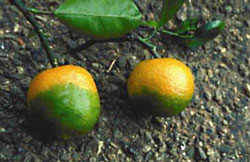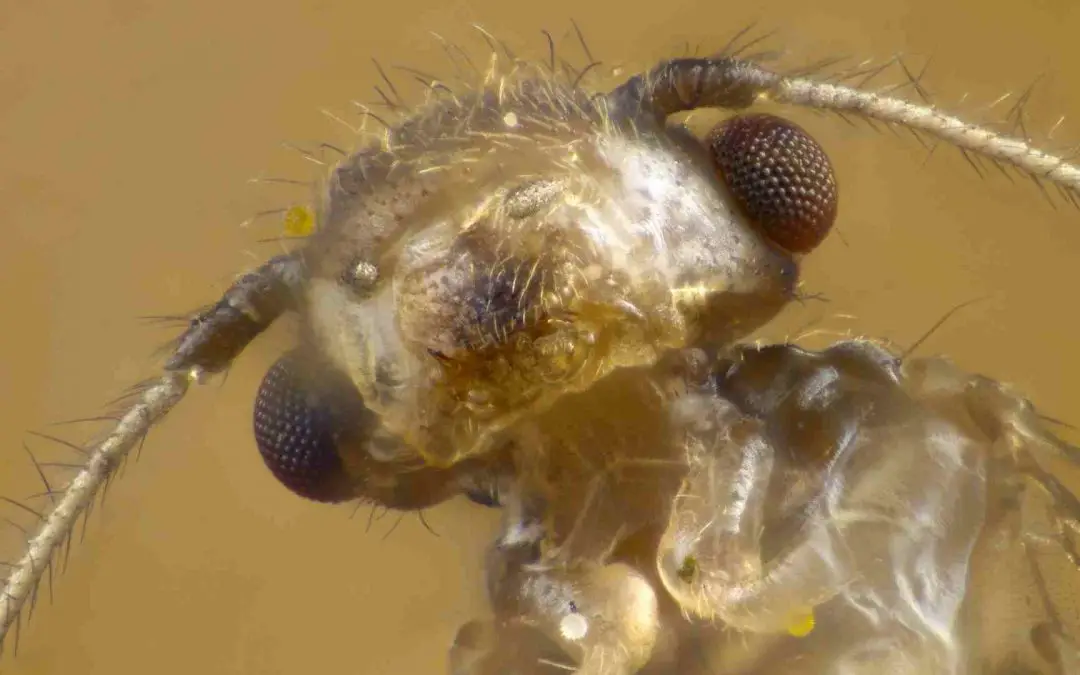You may have heard about the butterfly that flapped its wings over the Sahara Desert, and it led to a drought in the Amazon Rainforest. Equally surprising, but far more verifiable, is the story of a tiny Asian beetle that’s reshaping the agricultural industry in Florida. The insect is Diaphorina citri, or the Asian citrus psyllid. And as it infests Florida fruit trees with Citrus Greening Disease, local farmers are looking to bamboo as a more profitable and pest-resistant possibility.
Since 2005, citrus greening disease, carried by the Asian citrus psyllid, has spread like a plague across the citrus farms of Florida. Forced to choose between heavy applications of toxic pesticides or drastically diminished citrus harvests (both in size and flavor), many farmers are abandoning their orange and tangerine groves altogether. In search of a new Florida crop that can turn a tidy profit without falling victim to pests or disease, bamboo provides a promising alternative.
Citrus Greening Disease takes its toll on Florida citrus
Citrus greening disease, also called huánglóngbìng or yellow dragon disease, has been making inroads through citrus groves of Asia, Africa and the Americas for nearly a century now. As of 2009, 33 countries had reported incidents of this destructive pestilence, which was first identified in Florida in 2005.

We can blame the agricultural calamity on a minuscule insect, the Asian citrus psyllid. This pesky plant louse, Diaphorina citri, carries a pathogenic bacteria, Candidatus Liberibacter spp., which it transmits to citrus trees as it feeds. Biologists first became aware of this disease in the mid-twentieth century, as it spread all over Asia. They originally believed it to be a virus.
Starting around 2005, the psyllid and the citrus greening disease began appearing in Latin America and places as far north as Florida. In subsequent years, citrus growers have confirmed additional cases in California and Texas.
Once the bacteria-carrying insect arrives, the pathogen spreads across agricultural regions like wildfire. The majority of Florida citrus farmers were reporting cases of greening disease by 2008.
All members of the citrus family, Rutaceae, can act as a host to this harmful pest. Infected trees produce much smaller fruit, and equally if not more important, the fruit lacks the delicious sweetness that consumers crave. No longer able to produce a decent crop or a palatable fruit, these orchards are doomed.
And it’s happening all across the state and the industry. Florida real estate agent Clark Olmstead lives in Indian River County, in the heart of the former citrus industry. “Almost every week,” he says, “there’s an auction on a former fruit packing and shipping facility.”
Fighting the psyllid and combating the disease
If farmers are determined to continue working in the citrus business, their only option is to spray their orchards with pesticides, thoroughly and frequently. Apart from the distasteful idea of saturating edible fruit with pesticides, the ongoing maintenance of these contaminated orchards is growing prohibitively expensive. Some farmers say that citrus greening disease has driven the annual cost of maintenance from about $600/acre to $2000/acre.
Pioneering farmers are trying to breed pest-resistant strains of oranges and mandarines, but this is proving difficult. The University of Florida now has a mandarin called “Bingo” which is at least partially resistant.
Other biotech innovators are looking at genetically modified citrus as an option, but consumer attitudes towards genetically modified fruit are lukewarm at best. So far, the best results have come from splicing spinach genes into citrus trees. “What,” skeptics sardonically wonder, “could possibly go wrong?”
A promising future with bamboo farming
Averse to rising overhead and the use of heavy pesticides, farmers are looking for a new cash crop. And here in Florida, bamboo offers an encouraging option. There are species of bamboo for nearly every climate, but some of the most commercially viable bamboo species prefer the same subtropical, frost-free conditions you find in the citrus groves of the Sunshine State.

Unlike citrus and so many other commercial crops, bamboo is not so susceptible to pests and disease. A perennial grass, it is famously resilient and invulnerable to bugs. And although it’s not as appetizing as orange juice first thing in the morning, edible bamboo shoots are in surprisingly high demand.
Potential pitfalls
No one is more optimistic about bamboo than I am, but when idealism rubs up against realism, the results can be gloomy. The fact of the matter is that no one has been growing bamboo on a commercial scale in Florida long enough to have developed a proven concept.
While some companies are eager to enlist farmers and sell them 250 bamboo plants per acre, what will happen over the next five or ten years remains uncertain. What bamboo does in China or Indonesia is not the same as what it does in Florida or North Carolina. And although it grows like a weed, bamboo does require periodic maintenance, like the the thinning out of old culms, which can only be done by hand. And commercial cultivated bamboo also requires inputs like nitrogen to maximize yields.
Promising though it may be, a great deal of research remains to be done, in order to determine the most suitable species for Floridian climates and soils. And it will take time to see how much bamboo can be produced and how much money can be earned per acre. So get started now, but consider planting a test crop first, before you go and bet the farm.
(Check out our in-depth article on the Challenges of bamboo farming to learn more.)
Making money with bamboo
The uses for bamboo go on and on, for fuel, flooring, paper, and textiles, just to name a few. But most of those applications require a manufacturing process, and at this point, Florida has no factories to process bamboo. The fresh shoots, however, require no such processing, which is what makes them an attractive option for farmers.
Furthermore, bamboo takes about 5 or 6 years to reach maturity, at which point it can produce full-sized culms, ideal for building and construction, among other things. It’s still a lot faster than waiting for a vineyard or an orchard, but it’s a significant addition to the upfront set-up cost. The edible shoots come up within the first couple of years though. And many are hoping that some bamboo factories will be up and running in Florida by the time their clumps reach full size.
Another quick win is with biochar. Bamboo charcoal requires no industrial processing and has a wide variety of applications, for air and water purification, and as a soil amendment to make your land more productive.

The absence of an established bamboo industry in the US has many farmers hesitating. But at the same time, the plant’s astonishing potential has many growers and investors moving forward to gain an advantageous position in what could soon replace businesses like cotton and citrus in the Southern states.
Learn more about Bamboo Farming in the US and How to make money growing bamboo, or contact Fred Hornaday for a consultation on how to get started and monetize a bamboo plantation.
Bamboo for the win
Every time I turn around, it seems like bamboo is providing another solution to another potential catastrophe. Take a look at some of the following articles to learn how bamboo is mitigating one global crisis after another.
- Bamboo for poverty mitigation
- Ethical Ethanol: Bamboo for fuel
- How bamboo combats malaria in Malawi
- Bee Grateful: Big thanks to the honeybees
FEATURE PHOTO: Close-up of Diaphorina citri, also known as the Asian citrus psyllid.




















